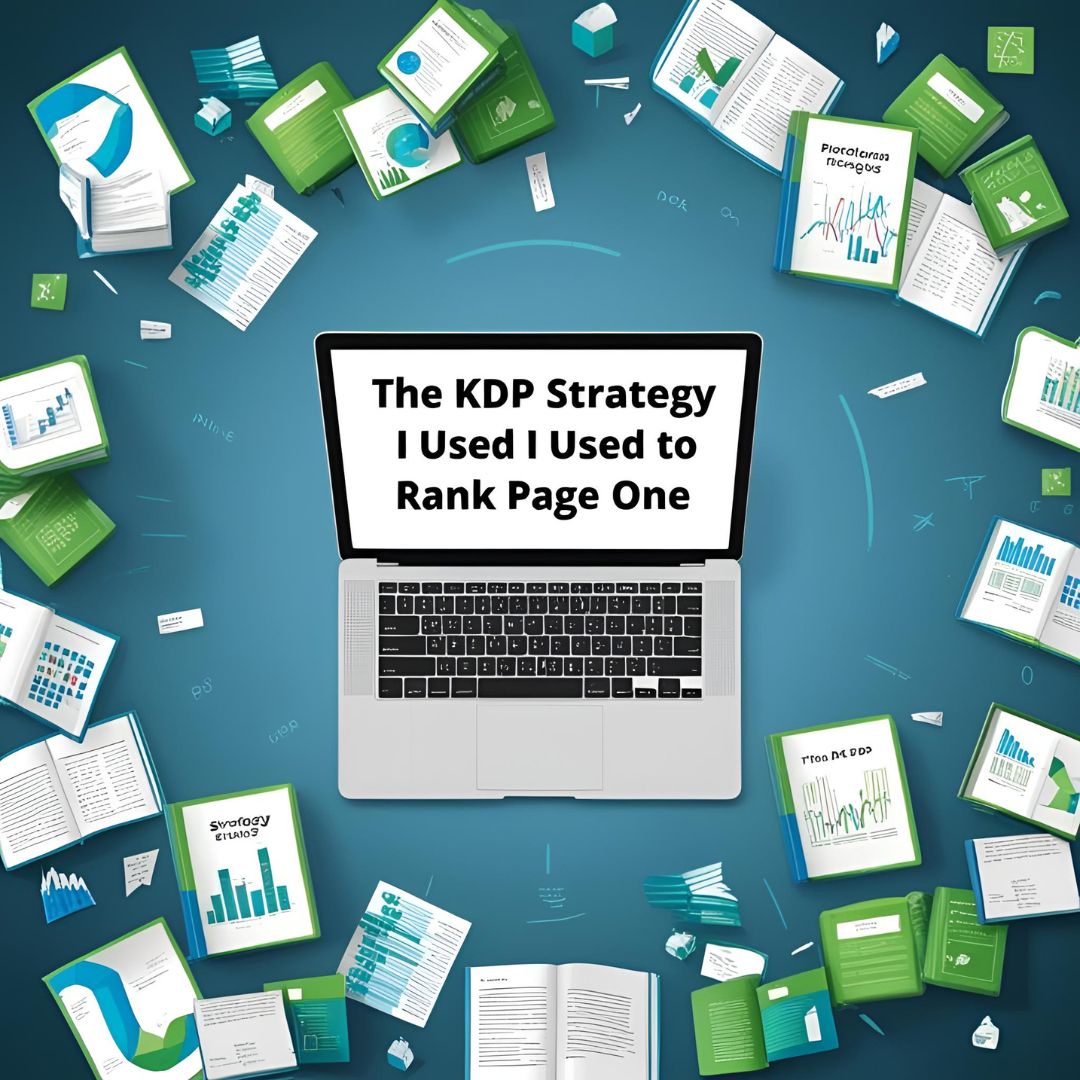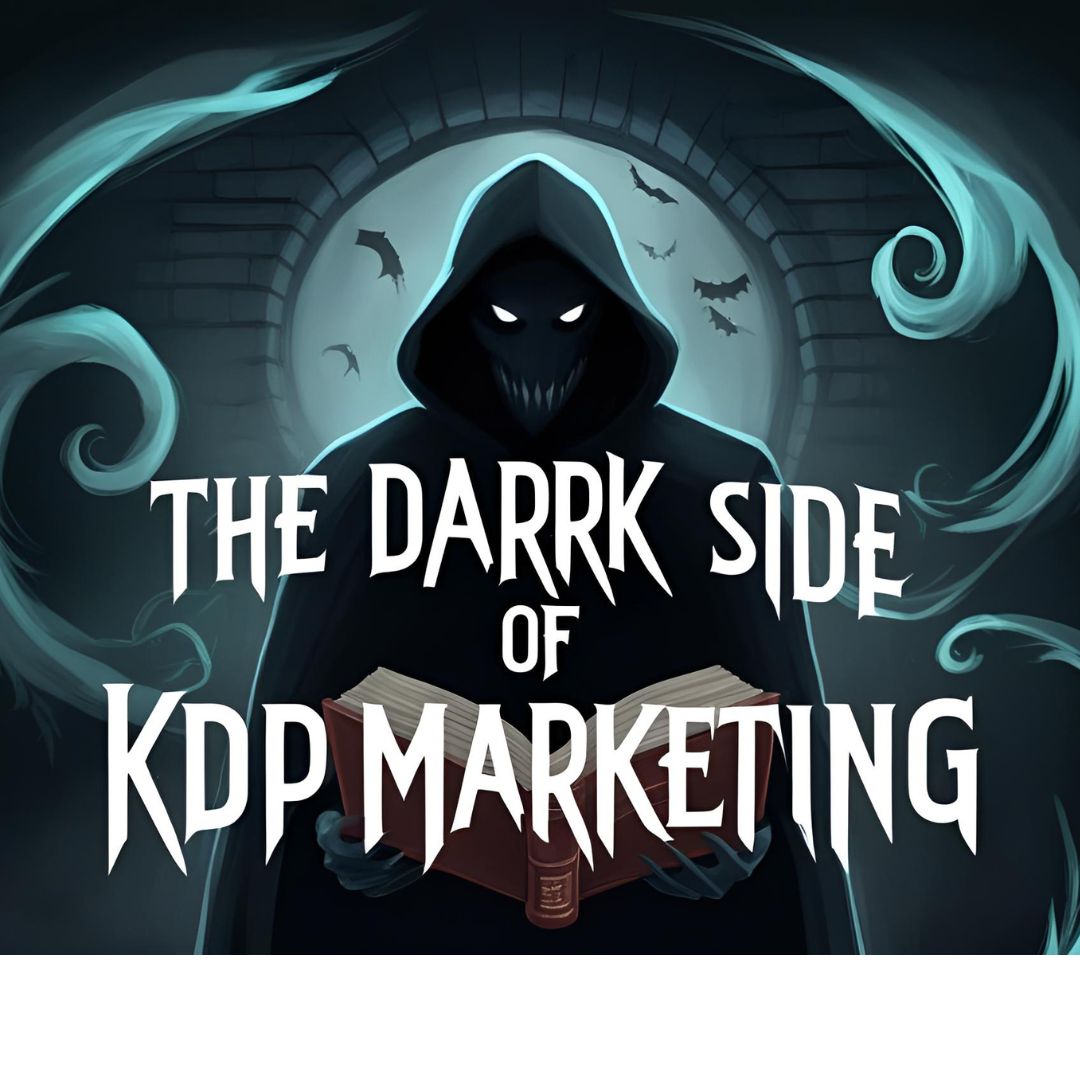Introduction to KDP
Kindle Direct Publishing (KDP) is an online platform developed by Amazon that allows authors and publishers to self-publish their books in digital and print formats. This service is particularly significant for self-publishers as it provides a cost-effective and efficient route to reach a global audience. With KDP, authors can publish eBooks and paperbacks with minimal upfront investment, giving them greater control over their work. Furthermore, the platform allows for both traditional and Kindle eBook publishing, catering to diverse reader preferences.
Understanding KDP is crucial for anyone looking to navigate the complexities of self-publishing. The platform operates on a royalty structure where authors can earn up to 70% royalties on eBook sales, depending on pricing and distribution choices. Additionally, KDP provides various tools and resources aimed at helping authors improve their publishing journey. For instance, through KDP Select, authors can enroll their eBooks in promotional programs designed to boost visibility, although they must agree to exclusive distribution terms for a set period.
Equally important is familiarizing oneself with the KDP ranking system. The ranking determines how books are discovered by potential readers on Amazon, as titles that rank higher generally receive more visibility and sales opportunities. Consequently, authors must leverage specific strategies to optimize their book listings, including proper keyword selection, compelling book descriptions, and attractive cover designs. By mastering these elements, self-publishers can enhance their chances of ranking on page one of Amazon’s search results.
In conclusion, understanding the fundamentals of Kindle Direct Publishing and its ranking system serves as the foundation for developing effective strategies to achieve success as a self-published author. By harnessing the power of KDP, authors can effectively navigate the competitive landscape of publishing and reach their desired readership.
Understanding Amazon’s Ranking System
Amazon’s ranking system serves as a vital mechanism that dictates the visibility of books within its vast marketplace. At its core, the ranking algorithm evaluates a myriad of factors that influence a book’s position on search result pages. One of the most significant contributors to this ranking is sales velocity. This term refers to the number of copies sold over a specific period, reflecting the book’s popularity and demand. A high sales velocity not only increases a book’s visibility but serves as a key indicator to Amazon that the title is worthy of promotion.
Another critical factor impacting a book’s ranking is customer reviews. The quantity and quality of reviews play an essential role in determining how a book is perceived by potential readers. A higher average rating coupled with a significant number of positive reviews can enhance a book’s credibility and attract more buyers. Conversely, a lack of reviews or a low rating can diminish a book’s chances of climbing the ranks. Encouraging satisfied readers to leave thoughtful and constructive reviews can directly influence a book’s ranking and visibility on the platform.
In addition to sales velocity and customer reviews, keywords operate as pivotal elements in the ranking process. Authors and publishers must strategically select relevant keywords that potential readers are likely to use when searching for a book. By incorporating these keywords naturally into the book’s title, subtitle, and description, authors can enhance their discoverability. Furthermore, continuous monitoring of keyword effectiveness allows for adjustments that align with changing trends and reader preferences.
Understanding these factors related to Amazon’s ranking system is crucial for authors aiming to optimize their books for greater visibility and influence. By focusing on sales velocity, encouraging customer feedback, and effectively utilizing keywords, authors can significantly improve their chances of achieving page one rankings on Amazon.
Keyword Research for KDP
Keyword research is a critical component of the Kindle Direct Publishing (KDP) strategy for authors aiming to rank highly in Amazon’s search results. Selecting the right keywords not only enhances the visibility of a book but also effectively connects with a target audience. This process involves several methodologies and tools designed to identify and optimize keywords that resonate with potential readers.
One of the primary resources for conducting effective keyword research is Amazon’s own search suggestions. When an author types a term into the Amazon search bar, suggestions auto-generate based on popular search queries. These keywords reflect actual buyer behavior and can be pivotal in determining what potential readers are seeking. Authors can compile a list of these keywords, ensuring they align with the book’s themes and content.
Additionally, analyzing competitor titles is vital in fine-tuning keyword selection. By observing the keywords used in top-selling books within the same genre, authors can gain insight into what works effectively. Tools such as KDSpy or Kindle Samurai can assist in this analysis by providing data on book rankings, sales estimates, and associated keywords. This way, authors can strategically position their titles amidst competitive works, enhancing their chances of discovery.
Moreover, tracking keyword performance is essential for ongoing optimization. Authors should regularly monitor the rankings and click-through rates of their chosen keywords to assess their effectiveness. Adapting and adjusting keywords based on performance metrics can lead to sustained visibility over time, contributing significantly to overall sales and readership.
In conclusion, thorough keyword research lays the groundwork for successful KDP publishing. By utilizing Amazon’s search suggestions, conducting competitor analysis, and consistently tracking keyword performance, authors can maximize their book’s potential in a crowded marketplace.
Effective Book Description Optimization
Crafting a compelling book description is crucial for attracting potential readers and improving the visibility of your title in competitive markets. An effective description serves as both a marketing tool and a means of conveying the essence of your book. To optimize your book description, it is essential to structure it logically while employing HTML formatting to enhance visual appeal and readability.
Begin with a captivating opening that hooks the reader’s interest. This can be achieved through a thought-provoking question, an intriguing problem, or a vivid image related to your book’s theme. Following this, provide a brief synopsis that outlines the main plot points or key concepts of the book, ensuring that you maintain a balance between generating curiosity and revealing critical information. It is advisable to aim for a tone that reflects the essence of your book, whether it be suspenseful, charming, or informative.
Keywords play a vital role in the optimization process. Research relevant keywords associated with your book’s genre and themes, and incorporate them naturally into the narrative of your description. It is beneficial to consider variations and synonyms of the main keyword to enhance searchability without falling into the trap of keyword stuffing. As a general guideline, the primary keyword should not exceed three occurrences throughout the description. This practice ensures your content remains engaging and authentic to the reader while enhancing its discoverability.
Incorporating bullet points can effectively summarize key features or compelling aspects of your book, allowing readers to easily digest information. Remember to conclude your description on a strong note, re-emphasizing the value or unique selling proposition of your book. By following these tips for effective book description optimization, you can enhance reader engagement and significantly improve your chances of ranking on page one of search results.
Leveraging Categories and Subcategories
The importance of selecting the right categories and subcategories when publishing a book on Kindle Direct Publishing (KDP) cannot be overstated. This choice plays a crucial role in enhancing your book’s visibility and ensuring it reaches the appropriate audience. The KDP platform offers a multitude of categories, each catering to different genres and topics. To maximize the impact of your book’s release, it is essential to take the time to identify the most relevant categories for your work.
Begin by researching the categories available within the KDP platform. Investigate the current bestsellers in your genre to understand where they are categorized. Pay attention to the subcategories as well, as these often provide more specific niches where your book can shine. You can utilize tools such as Amazon’s own browsing features to help pinpoint suitable categories that align with your book’s themes and audience interests. It’s advisable to choose categories that not only align with your book’s content but also have manageable competition; this approach can significantly improve your odds of ranking higher.
After your book has been published, remember that you are not locked into your chosen categories. KDP allows you to change categories post-publication if you believe that your book might perform better under a different classification. This flexibility can be particularly beneficial if you notice shifts in reader preferences or if your book gains traction in an unforeseen area. Monitoring your book’s performance using KDP’s reporting tools can guide you in making these category adjustments. By leveraging the right categories and subcategories, authors can enhance their book’s visibility, ultimately leading to improved rankings and sales on the platform.
The Role of Reviews and Ratings
The importance of customer reviews and ratings in establishing a book’s visibility and ranking on Amazon cannot be overstated. Reviews serve as a vital resource for potential readers, influencing their purchasing decisions and helping to shape the online reputation of the book. A positive review can significantly enhance a book’s credibility and increase its chances of reaching page one in search results. Therefore, authors should adopt strategies to cultivate sincere and constructive feedback from their readers.
One effective approach for soliciting reviews is to connect with readers directly. Authors can engage with their audience through social media platforms, newsletters, and author websites. It is beneficial to remind readers at the end of the book to leave a review—a simple request can lead to valuable feedback that boosts visibility. However, authors must maintain ethical practices in soliciting reviews. This includes avoiding incentivization tactics, such as offering freebies or payment in exchange for positive reviews, as these practices are against Amazon’s guidelines and can lead to penalties.
Once reviews start coming in, it is crucial to manage them responsibly. Authors should respond to feedback, regardless of whether it is positive or negative. Acknowledging positive reviews encourages loyal readers, while addressing negative feedback demonstrates professionalism and a willingness to improve. This open line of communication can foster a sense of community around the book and enhance its reputation.
Furthermore, actively monitoring reviews allows authors to glean insights into readers’ preferences and expectations. This understanding can guide future writing projects, ensuring that an author’s work continues to resonate with their audience. By prioritizing customer reviews and ratings, authors can significantly improve their book’s visibility and ranking on Amazon, ultimately supporting a successful publishing journey.
Promotional Strategies for KDP
Promoting a book effectively on Kindle Direct Publishing (KDP) can significantly impact its visibility and sales rankings. One of the key strategies involves utilizing Amazon Ads, which allows authors to create targeted campaigns that appear in search results and on product pages. This paid method enables authors to reach potential readers who are actively searching for titles in their genre, thereby increasing the chances of generating initial sales. Setting budget-friendly bids while carefully selecting keywords is crucial to maximize the return on investment.
Another effective promotional tactic is running Kindle Countdown Deals. This strategy involves offering the book at a discounted price for a limited time, which creates a sense of urgency among potential readers. During this promotional window, readers are more likely to purchase the book due to the appealing price point, leading to increased visibility on Amazon’s platform. Authors can promote these deals via their social media channels and mailing lists, thus enhancing awareness and driving more traffic to the book.
Social media platforms also serve as powerful tools for marketing KDP books. Engaging with an audience on platforms like Twitter, Facebook, and Instagram can be instrumental in building a reader community. Authors can share insights about their writing process, character backgrounds, and upcoming releases to generate interest. Additionally, running targeted promotions or giveaways on these platforms can entice readers to purchase the book and can lead to valuable word-of-mouth referrals. Collaborating with influencers or bloggers who align with the book’s content can further amplify reach.
In conclusion, a combination of Amazon Ads, Kindle Countdown Deals, and strategic social media engagement offers authors a comprehensive toolkit for enhancing book visibility and driving sales on KDP. Implementing these promotional strategies effectively can lead to improved rankings and long-term success on the platform.
Monitoring and Adjusting Your Strategy
In the fast-evolving landscape of self-publishing on Kindle Direct Publishing (KDP), consistently monitoring performance metrics is vital for authors aspiring to improve their rankings and sales. To navigate this dynamic environment, having a detailed understanding of how your book is performing can guide your adjustments to marketing strategies. Key performance indicators (KPIs) such as sales figures, rankings, and reader engagement metrics provide essential insights into the effectiveness of your current tactics.
One of the most effective tools for tracking sales and rankings is Amazon’s Author Central, which allows authors to analyze their book’s performance, including sales data and overall ranking trends over time. This platform not only offers an overview of sales figures but also allows you to assess how your promotional efforts are affecting your book’s visibility. In addition, services such as KDP Rocket or Publisher Rocket can give deeper insights into keyword optimization, ensuring your KDP strategy effectively targets the right audience.
Reader engagement metrics, such as customer reviews, ratings, and the average reading duration, are also critical indicators of how well your book resonates with readers. Utilizing platforms like Goodreads can help monitor reader feedback and interaction, which in turn can inform your marketing approach. Engaging with readers through social media or author newsletters can also foster a community, allowing you to gather valuable insights that can shape your future content or promotional strategies.
Overall, the key to a successful KDP strategy lies in being adaptable. Collecting and analyzing these performance metrics will enable authors to refine their promotional efforts, ensuring that they are best positioned to meet changing reader demands and market trends. Regularly updating your strategy based on data will help you maintain a competitive edge, ultimately leading to greater visibility and sales for your work.
Conclusion and Key Takeaways
The journey to rank a book on page one of Amazon’s Kindle Direct Publishing (KDP) platform involves a series of strategic decisions that can significantly influence visibility and sales. Throughout this blog post, we have explored various crucial elements of a successful KDP strategy. Understanding the importance of keyword selection, for instance, cannot be overstated. The right keywords, strategically incorporated into the title, subtitle, and description, not only enhance the discoverability of your book but also ensure that it resonates with your target audience.
Another essential aspect covered is the role of high-quality cover design and professional formatting. These elements contribute to a book’s first impression, attracting potential readers and encouraging them to engage with the content. Investing in professional services for cover and layout design can pay dividends, elevating your book above competitors in a crowded marketplace.
Additionally, we discussed the significance of reviews and ratings, emphasizing how they serve as social proof and influence purchasing decisions. Encouraging genuine reviews from early readers can foster trust and credibility, both of which are vital components of a successful launch strategy. Moreover, leveraging promotional strategies, such as price promotions or utilizing platforms like BookBub, can create the initial momentum necessary to escalate your book’s visibility.
In summary, implementing a well-crafted KDP strategy involves thorough research and an understanding of market dynamics. By combining these insights with effective marketing techniques and a commitment to quality, authors can improve their chances of ranking on page one, reaching a broader audience, and ultimately achieving their publishing goals. The landscape of self-publishing is evolving, and with the right strategies, aspiring authors can navigate it successfully, turning their creative aspirations into reality.



